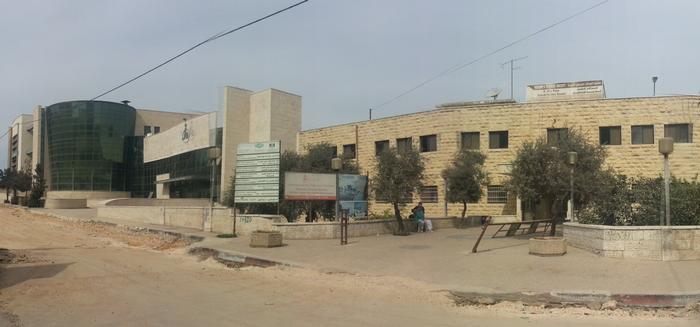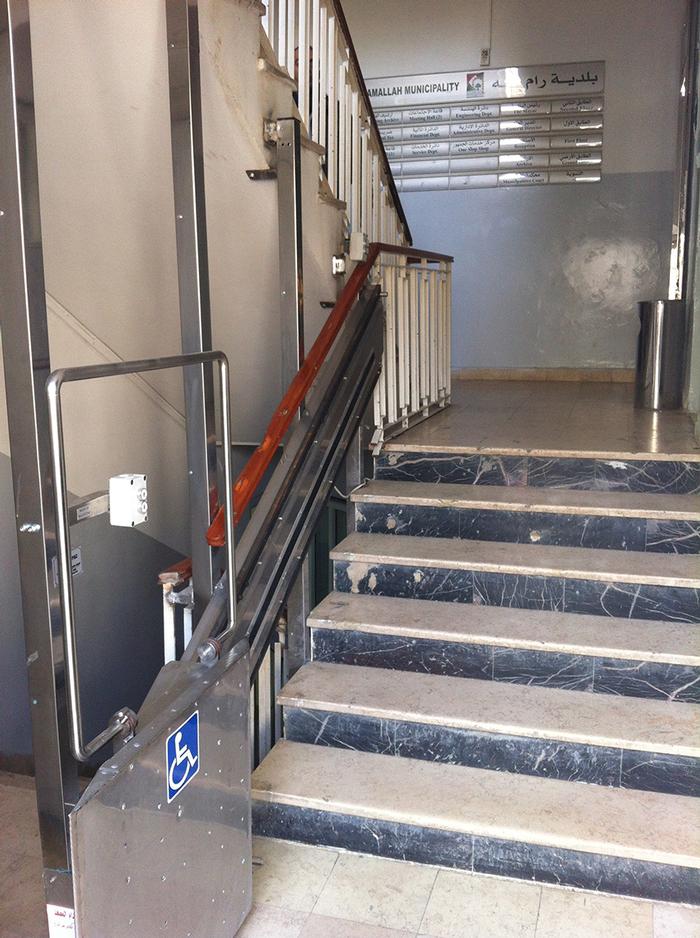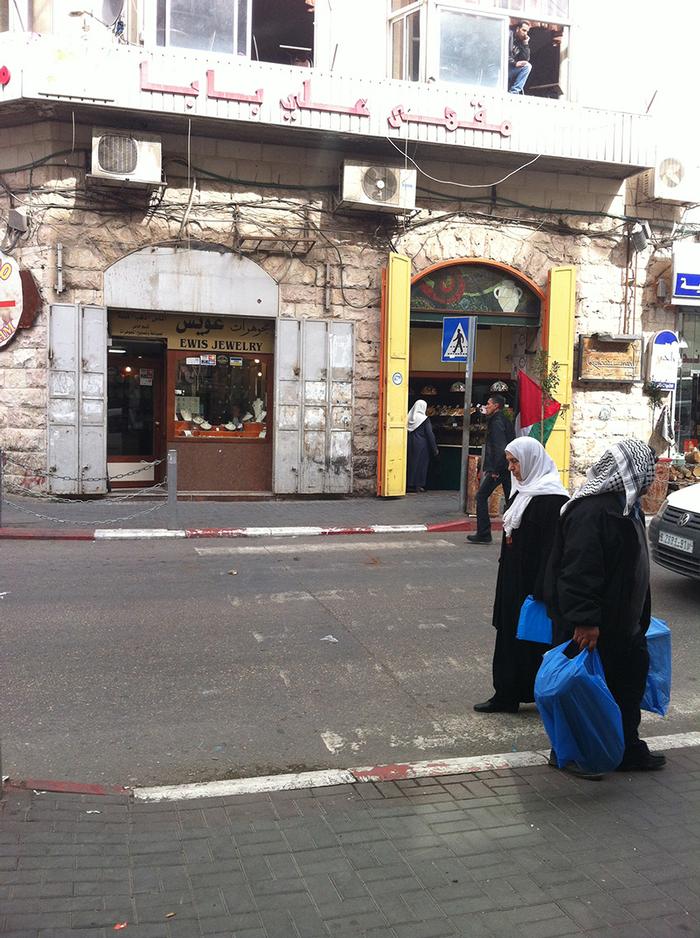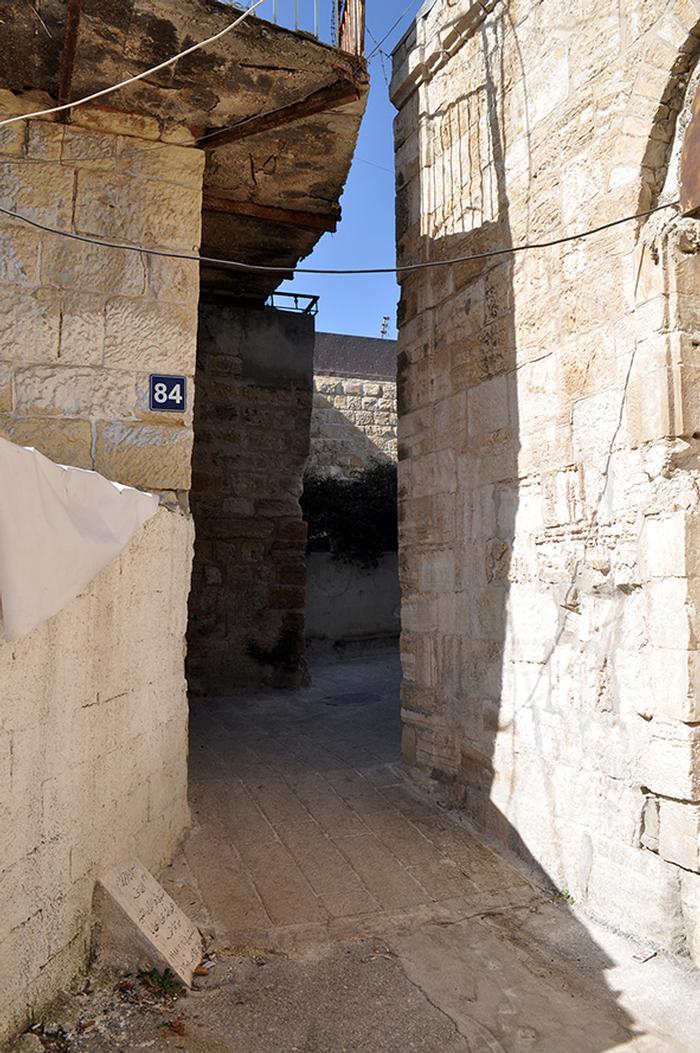Faiq Mari - EssayA Resilient Past and a Promising Future; Disability in RamallahThe last few weeks have had an enormous impact on me as an architect and as a human being. I have been exploring my city through the eyes of people with experiences entirely different from my own. I met several amazing persons, each of whom transformed my perception of my city in a multitude of ways. My journey actually began several months ago when I met Ihab at a local hospital. I was waiting in line for a few papers when I saw him, a lively paramedic busy handing patients medical reports. As I approached the desk to pick up my papers, I noticed his wheelchair and wondered what his story might be; for where I come from, people like Ihab often have a story to tell. I came across Ihab again in the elevator as he was leaving the hospital. It was Eid al-Fiter, and his 3-year-old daughter was eager for a walk in the Souq. An innocent remark from the little girl started a conversation, and as we made our way to one of the shops Ihab told me his story. He was shot during the first Intifada and left paralyzed below the waist. It was a hard time for him; feelings of anger and sadness, mixed with an injured pride, consumed the young activist as he lay in bed for several painful months. The Intifada (1987-1993), Arabic for “uprising”, was a time of mass activism and mobility for the Palestinians. As a population under fierce occupation, our people found no way to claiming their rights but through resistance. Society came together over projects for sustainable, self-sufficient living, while civil disobedience and demonstrations became a daily activity. The occupation, cornered by the popular uprising, reacted violently; adopting its infamous “break the bones” strategy and frequently shooting teargas canisters and live ammunition at peaceful demonstrations. Twenty thousand Palestinians were injured, three thousand of which were left permanently disabled. The effect this had on Palestinian society was immense. The newly disabled, like Ihab, were shocked by the reality they had to face; there were no institutions to offer them adequate care, the public realm was disabling, and society itself still suffered from remaining misconceptions regarding disability. Ihab and his compatriots assumed responsibility to change this reality and, along with conscious professionals and NGO’s, embarked on a long advocacy and awareness-raising project . As a result, society itself experienced an awakening; watching its youth disabled by the occupation yet still fighting for their rights changed the way society perceived disabled persons, and what once was a disgrace now became a symbol of hope and resilience. It was a bright chapter for Palestinians; the collaborative efforts of the community defied all constraints and culminated in projects such as the Abu-Raya Rehabilitation Center and community-based rehabilitation (CBR) schemes. The center, built by civil society members, doctors, and international organizations -Diakonia and NAD- offered a range of therapy and rehabilitation services; this eventually marked a turning point in the life of Ihab and many others. These community efforts were most salient up until the establishment of the Palestinian Authority in 1994, when they became a legal struggle over the rights of the disabled and were absorbed under the PA’s state-building project. In 1999, these efforts were legally validated by the Palestinian Legislative Council’s passing of the Disability Act with an overwhelming vote and formulating one of the most advanced legislation bills on disability in the region. Meanwhile, the Engineers’ Association issued a code stating the universal design requirements to be met in any built space to be licensed; it lobbied the municipalities to support and enforce the code, and held courses for architectural and engineering offices in order to raise awareness regarding disability. Ever since, substantial progress in the built environment has been made and my city, Ramallah ,was one of its pioneers. Muhannad, the municipality employee in charge of ensuring the accessibility of the public realm of the city confidently affirms this as he presents the city’s achievements. A car mechanic, an athlete and an activist for the rights of the disabled, Muhannad earned his position at the municipality after presenting a television report on the struggles facing disabled persons like himself in Ramallah. The municipality endorsed his efforts, and offered him a position when it issued a decree demanding full accessibility in all future public spaces, public buildings, and housing projects in the city. Currently, the city center is much more accessible to persons with physical disabilities. Sidewalks are equipped with dropped curbs, while accessible parking spaces are common. Newly constructed buildings throughout the city now have either flush entrances or adequate ramps leading to fully equipped elevators with Braille plates and audio-visual assistance, in addition to accessible toilettes and facilities. Moreover, the municipality is working on retrofitting existing public buildings to meet the needs of people of different abilities. Mustafa, who moves about in an electric wheelchair, appreciates the improved accessibility of Ramallah and notes its effect on his activity in society. Diagnosed with enzyme deficiency since the age of three, his story is one of hope and will power and a proof that –in his own words- “nothing is impossible.” Although he cannot obtain proper medication due to the restrictions of the occupation, and while even speech is struggle for him, Mustafa is an active member of society –an avid reader and member of Tanween reading club at university- and a gifted physics student. His unique condition makes him most appreciative of the city’s accessibility improvement initiatives, yet most sensitive to any lack of it (or taqseer). A single stair is an obstacle for Mustafa, he admits while urging architects and designers to assume their responsibility and design to include all. One organization that shoulders this responsibility is the Architectural Heritage Preservation Organization, Riwaq. Through their projects, they aim to revitalize old towns and buildings of Palestine and preserve the Palestinian culture. Recently, Riwaq had been paying greater attention to the needs of the disabled and in several projects have worked to enhance the accessibility of the hilly Palestinian townscape, in addition to the traditional buildings themselves. One prominent project is Hosh Qandah, a derelict traditional courthouse in the old town of Ramallah renovated by Riwaq and transformed into an art and community center. Around the Hosh, the alleywas (zuqaqs) and plazas underwent minimum interventions that enhanced their accessibility for all inhabitants of the old town, creating one of the largest accessible public spaces in Ramallah. Approaching the Hosh -not far from Ihab’s house, one passes several ramps in a subtly inclined alleyway that lead to a small courtyard garden opening onto a bronze door entrance. The courtyard itself extends in a slope leading to a larger tiled plaza around which lie a bakery, a music school and several houses. Passing by the bakery and by the music school, one descends a few ramps and arrives at the main street of the old town, hosting the farmers market, grocery shops, the municipal service center, and a traditional coffee shop where the older residents of the area often sit in their spare time playing backgammon and smoking pipe. For Ihab, the Hosh Qandah project offered much more than a community center, it offered an inclusive democratic reinterpretation of space “that respected all inhabitants of the old town, especially its senior citizens and the physically disabled.” Hadeel, who is visually impaired, also appreciates the efforts of the municipality and such projects, and notes the difference that occurred on the city center in the past few years. Although she laughingly admits to getting occasionally lost, she prefers the streets of Ramallah to other Palestinian cities. Yet, as a student who lives in a nearby village and has to commute daily, she notes the difficulties she faces using the transportation system and says that the public realm is still not adequately accessible. Buses often do not stop for her, and when they do they are ill equipped and difficult to access. Sidewalks are often cluttered with merchandise, garbage bins and sometime trees, and lack textures to guide her through the city and indicate important road crossings. The work that has been done in Palestine, and especially in Ramallah, represents a great step towards a universally designed built environment; however, much more remains to be done. Ihab, Hadeel, Mustafa and Muhannad still struggle to be fully active members of their communities, and while this is a responsibility shared by the different segments of society, the redefinition of disability as a contextual experience highlights to us designers our great responsibility in changing this reality. In a community where all suffer the debilitating effects of occupation, this responsibility gains more importance. Universal, inclusive, design is the key. The built environment should be designed as a democratic platform that fosters diversity and empowers members of society to achieve their full potential. Only then would society understand its true power, and as it witnesses its empowered members contribute to the well-being of all, it will be inspired to overcome all imposed barriers and accomplish whichever goal it sets for itself. To reach a state where universal design is the norm, not an exception, we must work on education and awareness-raising amongst architects and designers. Universal design should be integrated into design curricula and mandatory courses focusing on accessibility and inclusion must be taught. People with disabilities could actively contribute to these courses, sharing with students their experiences and keeping designers’ focus on the holistic humane nature of universal design, rather than detached requirements and standard. My conviction of the importance of educated emerged out of my talks with Mustafa, Hadeel, and Ihab who concentrated on the crucial role of education in raising awareness regarding disability. It was further affirmed through my talks with architects at Riwaq and the municipality, where architects, though very concerned with creating accessible built environments, did not have enough knowledge of the subject to fully pursue their goal. At the municipality, Muhannad pointed out that he is not an expert on universal design but provides his feedback based on his experience being physically disabled, and what he is currently learning through books and guides. He wishes to further his knowledge and thus improve the work of the municipality through learning more about other disabilities and methods to limit them through the built environment. As education builds generations of aware architects, sensitive to the needs of different sectors of their society, bright inclusive design solutions will become a regular outcome. I say this with confidence, for I have witnessed what power a small amount of exposure could entail. In a short period of time, and as I embarked on my journey, re-exploring my city, my perception of space around me changed and even my conception of design transformed. Talking to Mustafa was particularly pivotal; I came close to tears as I discovered the immense power –and responsibility- I have as a designer, as I have seen how a single stair could present an invincible barrier while a small slope opens a vista of opportunities. Walking the streets of my city, I started paying greater attention to accessibility concerns and thinking of local solutions that would enhance the built environment. Traditionally, Palestinian houses contained colorful tiling patterns often taking the form of ribbons. During a visit to one of Riwaq’s projects I envisioned applying texture to these brightly colored tiles and utilizing them as a Tactile guideways and warning strips for the visually impaired. With some variations in material and texture, these tiles could become a signature design element of Ramallah, or better yet Palestine, installed on all sidewalks and crossings-revitalizing a traditional design element through a valuable use. Moreover, traditional –and modern- Palestinian buildings often have a threshold at any door opening to the outside, as to prevent water leakage. With the architects at Riwaq, we developed a modified threshold design, inclined to allow for wheelchair access while still performing its original role. Such an element could easily be adopted by architects and institutions such as the municipality and the Engineers’ Association, and applied in public and private spaces allowing for greater accessibility in the built environment. Other simple ideas such as temporarily retrofitting public spaces and buildings with recycled timber or steel sheets to create small ramps, or applying Braille stickers to retrofit elevator buttons can also make a big difference. Apart from these basic ideas, Ramallah still needs extensive improvements. The transportation system in the city should be redesigned to allow for its use by a wide range of differently-abled people. Low-floor buses with minimum horizontal and vertical gaps at entry points should be utilized as well as accessible vans as taxis. Safety measures should be enhances at streets by widening sidewalks to allow for enough clearance for shops and separate lanes for pedestrians and bicycles as well as fencing any dangerous level-drops, and installing sound and vibration emitting traffic signals wherever possible. Moreover, adequately placed and designed vending machines, ATM machines, payphones, and elevator buttons should be installed throughout the city. And In an era of increased technological advancement, the city’s cyberspace should also be adapted to a wide range of abilities. The municipality’s website –as well as other service providers’- should be equipped with audio-visual aids, and its geographic information system (GIS) should provide assistance services to the physically disabled –such as locating the most convenient transportation routes. Until these ideas become regular in any design process, conscious architects and designers will have an even greater role. We must actively advocate for the rights of the disabled, monitoring the built environment and ensuring that relevant codes and legislations are properly applied, undertake awareness-raising campaigns, while lobbying for a participatory design approach to all public spaces and pioneering the application of the concepts we preach. The road is long and difficult, but it is during such times of difficulty that we discover our true strength. During the first Intifada, our people united and achieved things never thought possible; what was a period of oppression later heralded the dawn of a revolution in society’s perception of its disabled members. Abu-Rayya rehabilitation center, the CBR programs, and Ihab’s story all stand witness to what collective determination can achieve. Yet for all that remains to be done, it is time for us all to join forces as a society and particularly as designers to treat this matter with urgency and devotion. Additional Help and InformationAre you in need of assistance? Please email info@berkeleyprize.org. |




